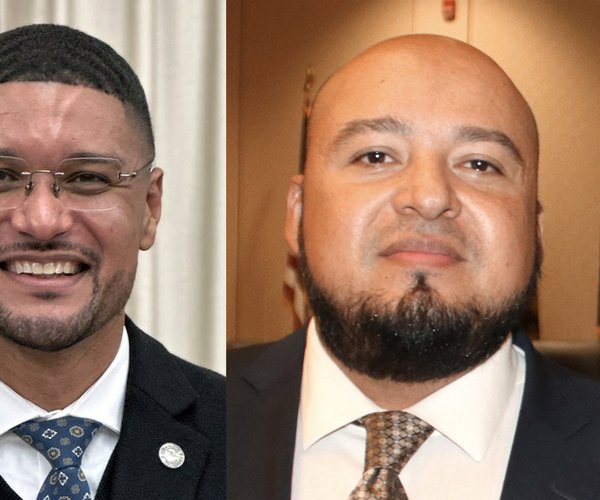The Stanislaus County Fair may be operating in a far different format this month but members of the Ceres and Central Valley high school FFA chapters are not complaining. Last year there was no fair at all due to the pandemic and being allowed to bring in their animals has felt like a return to normalcy with an appreciation for good times with peers.
Central Valley High School has a total of 20 FFA members participating in the fair, 11 with swine entries, four with steers, three with rabbits, and two with goats.
Adviser Clarissa Farinelli said the pandemic reduced the numbers from prior years.
“Numbers are down, yeah,” said Farinelli. “Normally I have 25 kids doing pigs and 11 now.”
She explained that when the FFA crew got their pigs nobody really knew if the fair would be happening or what it would be like “so I think some just chose not to just in case.”
“They’re excited it’s happening because last year it didn’t,” Farinelli said of the students toward the fair. “They enjoyed having something to do during COVID because we weren’t back at school when we got pigs again. They’re enjoying it. It’s a good experience.
She said the FFA members were excited about a live auction as opposed to the online auction last year.
“It’s more of a community event. All the businesses will come and sit in the ring and bid,” said Farinelli.
The fair experience started off with a bang on July 7 when CVHS FFA member Abbie Milligan took “Best in Show” for her cavy entry (guinea pig).
During the July 13 rabbit showmanship, Central Valley FFA member Liana Guzman placed first in Novice Showmanship, first in Class and Best of Breed; Crystal Melgoza claimed third place in Advanced Showmanship, and took Reserve Champion FFA Meat Pen. Arianna Gutierrez took second place in Advanced Showmanship, and third place in FFA Single Fryer.
Far fewer Ceres High School FFA members are showing at this year’s fair. Four have pigs and one student entered a breeding doe and a market goat.
CHS ag adviser Mardella Reynolds explained that having in-class attendance up in the air earlier this year hampered participation in FFA.
“Some parents can’t do the financial responsibility – these projects are expensive – and some kids weren’t comfortable,” said Reynolds. “We didn’t know if there was going to be a fair or if we would be allowed to travel.”
Word came in April that the fair would be happening in limited fashion.
When kids receive their market pigs in March the unknown was whether there would be a fair where the kids could sell their animals. A pig can cost $700 upfront, Reynolds said.
Bianca Underwood, a member of Ceres High FFA thinks the fair is much better than last year’s virtual market, saying “it was so hard to sell my goat last year.”
“Selling a lamb last year was even harder because no one really buys lamb or goat,” said Bryce Voelker. “Not enough people like it and people are afraid of COVID and animals.”
Pigs are easier to sell.
While the kids make a bit of profit when the animal goes off to the slaughterhouse, the fair offers a unique summer experience with lifelong memories.
“I think most of us are here for the experience,” said Dakota Boston, CHS FFA member. “It’s kind of like a giant family, in a way.”
“It can be stressful – it’s got its ups and downs,” said Underwood, who said the animals seem to misbehave the most at the fair out of their normal living quarters.
“Getting them to listen is stressful,” she said. “When they’re in a new environment they act crazy sometimes.”
This was Dayna Naylor’s first time bringing an animal to the fair. She likes the bonding experience of hanging out around the animal barns with friends.
The pigs were brought to the fairgrounds on Wednesday, July 14 and auctioned off Saturday. That was when they parted with the animal they invested months of time and emotion into.
“This is my fourth year showing pig,” said Boston, “and it never gets easy. Every year it’s the same. All the hard work and all the time you spend with them, you know, you build a real strong connection and then it’s just over.”
After the sale, there is also a period of adjustment for the kids with little to do until the next animal comes around.
“It sucks waiting,” said Underwood, “because you get so used to going to the farm every day, every morning and night, and you no longer are for so long.”
The cycle will start again in March – even for Boston who will be graduating next year but can still be involved with FFA for another year after school. He wants to be an agriculture teacher. Voelker hopes to become a veterinary technician while Underwood wants to go into either the medical or veterinary field. Naylor wants to become a school teacher.
Students must keep up their grades as a condition to joining FFA.









